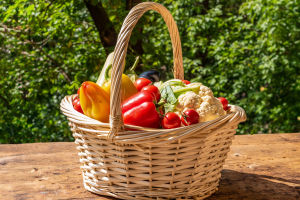Matcha Power Boost
Lykkers, have you ever wondered what makes matcha so unique compared to regular green tea? Many of us enjoy matcha-flavored treats like cakes, cookies, and ice cream, but few truly know the story behind the powder itself.
Recently, a visit to a professional matcha company specializing in exports revealed standardized tea plantations, processing lines, and the secrets behind matcha’s flavor, aroma, and quality. Today, we’re diving deep into matcha—its production, health benefits, and more—so we can fully appreciate every sip.
The Japanese Matcha Tradition
Matcha is widely associated with Japan, where it has become a cultural symbol and an art form. The Japanese tea ceremony highlights precision in preparing and whisking matcha, emphasizing aesthetics, aroma, and taste. Only the finest powdered green tea, carefully steamed and stone-ground, can be used for ceremonial matcha.
This tradition ensures a smooth texture, vibrant green color, and a slightly sweet flavor with minimal bitterness, making matcha a unique experience for tea lovers worldwide.
The Special Matcha Production Process
Producing matcha involves several careful steps: high-quality fresh green tea → steaming → grinding → ultra-fine pulverization → low-temperature drying → matcha. Every step happens at low temperatures to preserve nutrients. Unlike regular green tea powder, matcha must be stone-ground from steamed, shaded leaves. International standards specify that only this method can truly be called “matcha.”
Shading the tea plants for 20–30 days before harvest boosts chlorophyll and amino acids while reducing bitterness. Steaming preserves the green color and enhances aroma. Finally, stone milling creates an incredibly fine powder, allowing matcha to froth beautifully when whisked.
Matcha vs. Green Tea Powder
Many think green tea powder equals matcha, but the differences are significant:
1. Raw Material: Matcha uses high-quality, shaded leaves with more amino acids and chlorophyll, less caffeine, and precise harvesting standards.
2. Processing: Only stone-ground, steamed, shaded leaves can be called matcha. This complex method preserves delicate flavors, giving matcha its unique seaweed-like aroma.
3. Quality: Matcha has a bright green color, smooth texture, froths easily, and tastes slightly sweet with minimal bitterness. Regular green tea powder often appears pale green, tastes bitter, and has fewer antioxidants.
Even products labeled “matcha” may sometimes be regular green tea powder. We need to look closely at ingredients to ensure authenticity.
Why Matcha Isn’t Bitter
The bitterness in tea comes mainly from caffeine. Matcha uses young, shaded leaves with higher chlorophyll and amino acids and lower caffeine, making it naturally smoother. The steaming process and fine powdering also reduce bitterness. Moreover, brewing temperature affects extraction—cooler water slows caffeine release, making cold-brewed matcha taste mild yet flavorful.
Health Benefits of Matcha
Matcha offers more nutrients than regular green tea because we consume the whole leaf. A single cup of matcha contains the antioxidants equivalent of roughly three cups of green tea. Key benefits include:
1. Rich in antioxidants: Matcha is packed with catechins, particularly EGCG, which combats inflammation, promotes cell repair, and supports artery health.
2. Heart health: Drinking matcha may improve cholesterol, triglycerides, and blood sugar, reducing the risk of heart disease.
3. Supports weight management: Matcha can enhance metabolism and calorie burning, complementing healthy lifestyles.
4. Promotes focus and relaxation: High levels of L-theanine in matcha increase alpha brain waves, reducing stress and improving alertness without the jitters of coffee.
Beyond Drinking: Matcha’s Expanding Uses
Matcha isn’t just for tea. Modern technology and market demands have expanded its applications to food, beverages, baked goods, and even health supplements. Global patent trends show matcha innovations continue to grow, with industries exploring new ways to use this vibrant green powder.
Its all-leaf consumption method also demands high hygiene and precise processing, pushing matcha production toward greater mechanization and automation.
How to Judge Matcha Quality
For enthusiasts, matcha can be assessed through:
- Color: Bright, vibrant green indicates higher leaf chlorophyll and quality.
- Texture: Finer, softer powder usually signals higher-grade matcha.
- Aroma and taste: High-quality matcha has lasting, pure fragrance with a smooth, sweet finish and minimal bitterness.
Our Matcha Journey
Lykkers, matcha isn’t just a trendy ingredient—it’s a cultural gem and a superfood powerhouse. From its careful production and delicate flavor to its amazing health benefits, matcha gives us an experience unlike any other tea. By learning how to spot real matcha and appreciating its special qualities, we can savor every cup and make our matcha journey truly memorable.
What is Matcha? History of Matcha and How to Make Matcha
Video by Nioteas TV
-
 Pear TimeWhen is the Perfect Month for Pears? Discover the Sweetest Season and Pick the Juiciest Ones!
Pear TimeWhen is the Perfect Month for Pears? Discover the Sweetest Season and Pick the Juiciest Ones! -
 Coconut Juice GuideStep-by-Step Guide to Make Creamy Freshly Squeezed Coconut Juice at Home—Plus How to Use the Leftover Pulp!
Coconut Juice GuideStep-by-Step Guide to Make Creamy Freshly Squeezed Coconut Juice at Home—Plus How to Use the Leftover Pulp! -
 Veggie Power Boost10 Super Vegetables That Can Boost Our Health and Energy—You Won’t Believe How Easy They Are to Add to Meals!
Veggie Power Boost10 Super Vegetables That Can Boost Our Health and Energy—You Won’t Believe How Easy They Are to Add to Meals!
Copyright © zogu 2021 - 2025. All Right Reserved.